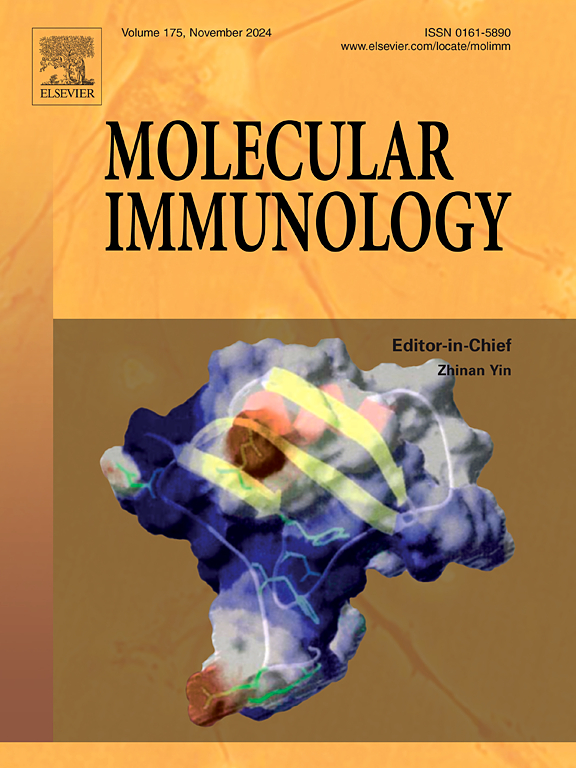Deciphering cell-specific genetic insights: Unraveling the immunogenetic landscape of systemic lupus erythematosus
IF 3.2
3区 医学
Q2 BIOCHEMISTRY & MOLECULAR BIOLOGY
引用次数: 0
Abstract
Functional genes within genomic loci associated with systemic lupus erythematosus (SLE), as identified by genome-wide association studies, exhibit cell-specific characteristics. This study delves into the impact of genetic variants within SLE loci on gene expression in different types of immune cells, unraveling the complex interplay between genetics and immunopathogenesis. Through the integration of genetic association and single-cell transcriptomic sequencing data, we identified potential cell-specific susceptibility genes for SLE across diverse immune cell subsets. The single-cell eQTL analysis revealed 30,409 associations involving 3583 SLE-associated SNPs. These SNPs exhibited associations with expression levels of 147 genes across 14 distinct cell types. The single-cell summary data-based Mendelian randomization (SMR) analysis identified 119 significant associations between the expression levels of 44 genes and SLE. Notably, myeloid cells exhibited associations solely within the MHC region, while T, B, and natural killer cells showed associations with both MHC and non-MHC genes in relation to SLE. Analysis of single-cell transcriptomic data from 33 children SLE cases and 11 match controls (227,303 cells), as well as 7 adult SLE cases and 5 match controls (78,414 cells) highlights differential expression of key genes. Notably, genetic variants within HLA-DRB1, HLA-DRB5, HLA-DQA1, HLA-DQB1, IRF7, IRF5, BLK and HLA-DPA1 play a pivotal role in mediating immune dysregulation in specific immune cell types. Our study contributes to a comprehensive understanding of the intricate relationships between genetics, gene expression and SLE susceptibility. The findings shed light on the cell-specific impacts of genetic variants within SLE-associated genomic loci.
解密细胞特异性基因:揭开系统性红斑狼疮的免疫基因图谱。
全基因组关联研究发现,与系统性红斑狼疮(SLE)相关的基因组位点内的功能基因具有细胞特异性。这项研究深入探讨了系统性红斑狼疮基因位点内的遗传变异对不同类型免疫细胞基因表达的影响,揭示了遗传学与免疫发病机制之间复杂的相互作用。通过整合遗传关联和单细胞转录组测序数据,我们在不同的免疫细胞亚群中发现了系统性红斑狼疮潜在的细胞特异性易感基因。单细胞 eQTL 分析揭示了 30,409 个关联,涉及 3583 个系统性红斑狼疮相关 SNPs。这些 SNP 与 14 种不同细胞类型中 147 个基因的表达水平有关。基于单细胞汇总数据的孟德尔随机化(SMR)分析确定了 44 个基因的表达水平与系统性红斑狼疮之间的 119 种显著关联。值得注意的是,髓系细胞仅在 MHC 区域内表现出相关性,而 T、B 和自然杀伤细胞则表现出 MHC 和非 MHC 基因与系统性红斑狼疮的相关性。对 33 例儿童系统性红斑狼疮病例和 11 例匹配对照(227 303 个细胞)以及 7 例成人系统性红斑狼疮病例和 5 例匹配对照(78 414 个细胞)的单细胞转录组数据进行分析,发现了关键基因的差异表达。值得注意的是,HLA-DRB1、HLA-DRB5、HLA-DQA1、HLA-DQB1、IRF7、IRF5、BLK 和 HLA-DPA1 中的基因变异在介导特定免疫细胞类型的免疫失调中起着关键作用。我们的研究有助于全面了解遗传学、基因表达和系统性红斑狼疮易感性之间错综复杂的关系。研究结果揭示了系统性红斑狼疮相关基因组位点中的遗传变异对特定细胞的影响。
本文章由计算机程序翻译,如有差异,请以英文原文为准。
求助全文
约1分钟内获得全文
求助全文
来源期刊

Molecular immunology
医学-免疫学
CiteScore
6.90
自引率
2.80%
发文量
324
审稿时长
50 days
期刊介绍:
Molecular Immunology publishes original articles, reviews and commentaries on all areas of immunology, with a particular focus on description of cellular, biochemical or genetic mechanisms underlying immunological phenomena. Studies on all model organisms, from invertebrates to humans, are suitable. Examples include, but are not restricted to:
Infection, autoimmunity, transplantation, immunodeficiencies, inflammation and tumor immunology
Mechanisms of induction, regulation and termination of innate and adaptive immunity
Intercellular communication, cooperation and regulation
Intracellular mechanisms of immunity (endocytosis, protein trafficking, pathogen recognition, antigen presentation, etc)
Mechanisms of action of the cells and molecules of the immune system
Structural analysis
Development of the immune system
Comparative immunology and evolution of the immune system
"Omics" studies and bioinformatics
Vaccines, biotechnology and therapeutic manipulation of the immune system (therapeutic antibodies, cytokines, cellular therapies, etc)
Technical developments.
 求助内容:
求助内容: 应助结果提醒方式:
应助结果提醒方式:


